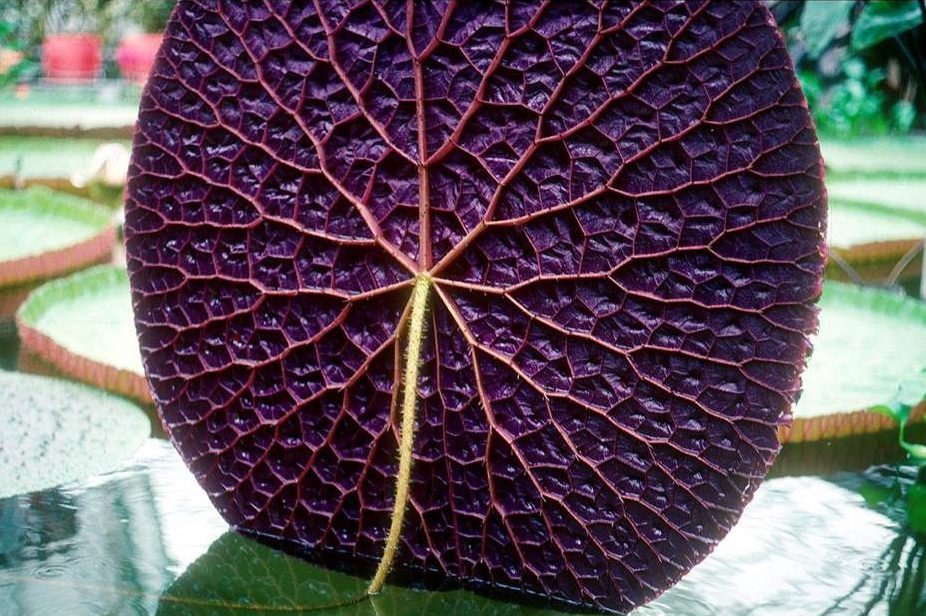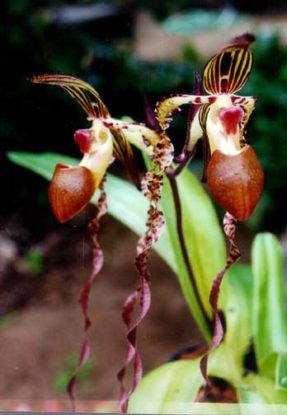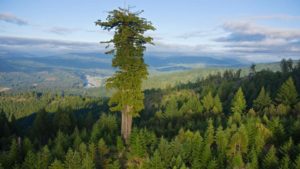
Wisdom from the plant world – we have much to learn from them
Biomimicry is the imitation of the models, systems, and elements of nature for the purpose of solving complex human problems. How does this relate to my fascination with orchids?
The more I read and learn about orchids, the more amazed I am at all the ingenious adaptations they have developed to obtain nutrients and attract pollinators and, in general, take the best possible advantage of their environment.
When I first started raising orchids, they were for me a new discovery, as was most everything in my new home in the Philippines, where I would live for five years on a work assignment. New and different work and living environments leave a deep impression, and my own orchid collection is a continuing reminder of my experiences 35 years ago as an expat in the Philippines. Orchids have become part of my life experiences, as well as a continued source of learning.
The Cabaret of Plants – how plants have influenced architecture and design
So it is not unexpected that I found fascinating a book entitled “The Cabaret of Plants” by Richard Mabey. It is an eye-opening journey through time, dealing with our understanding of, and relationship with plants. From my perspective as a conservationist it was very educational to see how this relationship has changed with time.
Mabey recounts that in the 1800’s Europeans were hugely interested in learning about plant life, many species of which were as yet unfamiliar or undiscovered. To name just two examples: The giant Sequoias of California were discovered in 1850 and drew tens of thousands of visitors, while London’s Kew Gardens, the mecca for all botanical discoveries, had on display many strange plants from the Amazon. The giant Amazonian waterlily with its elegantly structured leaves was so admired that it became the model for the greatest glass building of that century.
Today’s architects are drawing on nature’s wisdom in numerous and surprising ways. To see some examples, go to TED website and type “biomimicry in architectural design” into the search box. You will be absolutely amazed at the innovations which have resulted by simply studying how plants have been doing things for ages. We are finally learning from them how to make buildings stronger, more resilient, and more sustainable. Watch an especially good one here.
If astonishing inventiveness of nature has caught your attention, here is a whole playlist of TED talks, featuring lessons from the plant and animal worlds.
Early interest in orchids
In the 1800’s orchids were capturing the public’s imagination as commercial collectors headed to exotic lands in search of new wonders.
 Mabey references the orchid Paphiopedilum sanderianum, first discovered in a rainforest in Sarawak, Borneo by the German plant collector J. Forstemann in 1885. The plant is named after Frederick Sander, who is described by the author as “a Victorian orchid entrepreneur whose ambition to bring orchids within the reach of ordinary people was achieved by stripping whole areas across the globe clear of their plants”. As a result of over-collecting, this paphiopedilum was long thought to be extinct, but was rediscovered in 1978 in a remote part of Sarawak.
Mabey references the orchid Paphiopedilum sanderianum, first discovered in a rainforest in Sarawak, Borneo by the German plant collector J. Forstemann in 1885. The plant is named after Frederick Sander, who is described by the author as “a Victorian orchid entrepreneur whose ambition to bring orchids within the reach of ordinary people was achieved by stripping whole areas across the globe clear of their plants”. As a result of over-collecting, this paphiopedilum was long thought to be extinct, but was rediscovered in 1978 in a remote part of Sarawak.
In the late 1800’s plants were regarded for not only their floral beauty and commercial value but also as subjects of scientific study, due to their strange existences and survival skills. This was a time when plants were still a great mystery.
As botanical knowledge increased, and discoveries were made about genetic inheritance and evolution, the amateur botanist’s function was relegated to recording the distribution of wild species, while the botanist’s work took place in the laboratory.
Fast forward to the current time. Most people today are less inclined to spend time studying and learning from plants. The public curiosity, so prevalent earlier on, has been lost. According to Mabey,
plants in the twenty-first century have been largely reduced to the status of utilitarian and decorative objects.
I was struck by Mabey’s remarkable insight. He points out that it is “odd that we haven’t regained our ancient sense of wonder [of plants], especially now [that] we understand how crucial the plant world is to our own survival. Perhaps …we find it hard to accept that plants don’t need us in the way we need them”. The modern world’s view of plants has, unfortunately, evolved to a strictly consumerist view.
The UN weighs in on the importance of studying and learning from plants
The way humanity should be looking at plants is shown by the work of the UN, which describes the plant kingdom with its more than 30,000 species as
the economy’s primary producer… photosynthetic cells capture a proportion of the sun’s radiant energy and from that silent diurnal act comes everything we have: air to breathe, water to drink, food to eat, fibres to wear, medicines to take, timber for shelter.
Mabey reminds us of the plants’ importance as our front line defense against our environment’s greatest threat today.
Trees combat climate change, soak up floods, purify city air. Wildflowers help insects survive so they can pollinate human crops.
 However, the world at large is not taking this holistic approach. Rather than recognizing the plant world as a source for solutions the opposite is happening, according to Mabey. He makes his case by referencing the well-known British conservationist Tony Juniper, by pointing out Juniper has “openly abandoned the idea of arguing for plant’s ‘intrinsic value’ in favor of stressing their ‘economic potential’”. Contrasting this view to the historical view of nature, the author states that
However, the world at large is not taking this holistic approach. Rather than recognizing the plant world as a source for solutions the opposite is happening, according to Mabey. He makes his case by referencing the well-known British conservationist Tony Juniper, by pointing out Juniper has “openly abandoned the idea of arguing for plant’s ‘intrinsic value’ in favor of stressing their ‘economic potential’”. Contrasting this view to the historical view of nature, the author states that
Nature, once seen as some kind of alternative or counter to the ugliness of corporate existence, is now being sucked into it.
Here we see why there is such a horrific increase in deforestation, with vastly outnumbered countervailing forces trying to stop it. Forests are
complex systems [that] become reduced to green blurs, with dangerous consequences both for us and for individual species.
The force of capitalism, with its sole focus on profit, fails to recognize the complexity and intrinsic value of forests, and instead sees these natural systems simply as “natural capital”.
Changing how we view ourselves and our role in the over-all ecosystem of the planet
Throughout the book, the author paints a picture of plants having an ‘autonomy’ and an agenda of their own. He quotes Samuel Coleridge in saying,
Everything has a life of its own and … we are all one life.
Mabey, in his excellent journey through time of humans’ relationship with plants, gives us an alternative to viewing ourselves not as ‘natural capitalists’ but as ‘natural cooperators’. Read more about this book here.
As we search for solutions to the problem of vanishing species rapidly being sacrificed at the altar of profits, Mabey seeks to encourage in us an awakening of our ancient awe and respect of the natural world. He helps us see that among the many gifts that plants have to offer, their greatest gift is to teach us to view ourselves as part of the complex web of life, and our role in preserving it.![]()